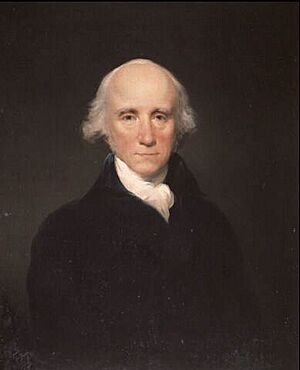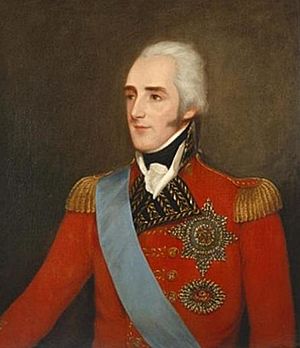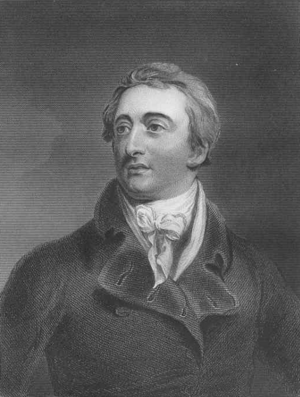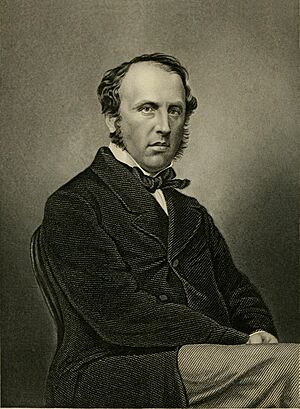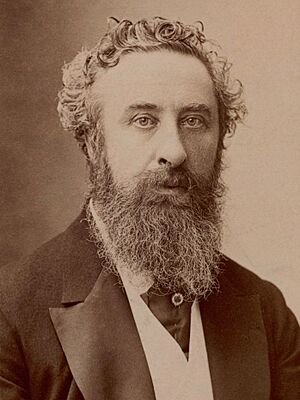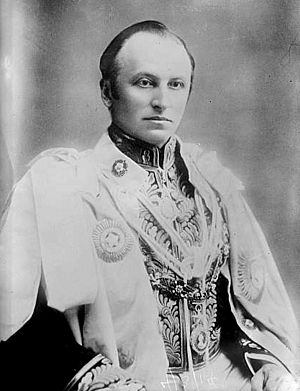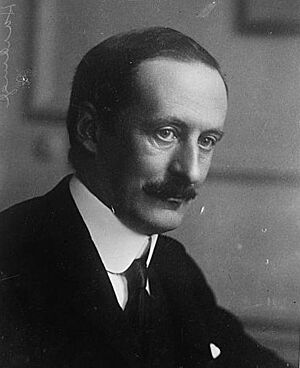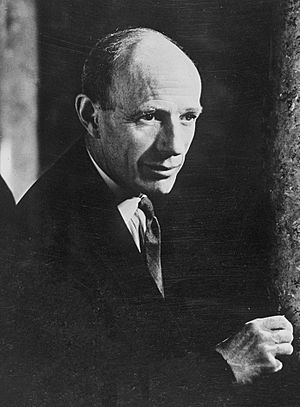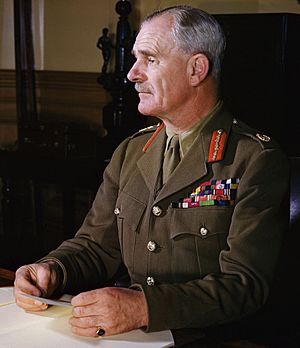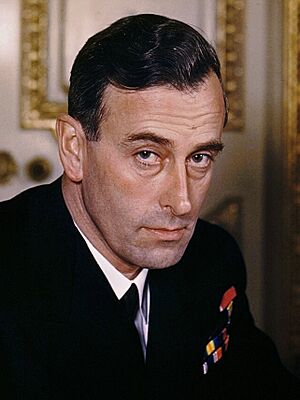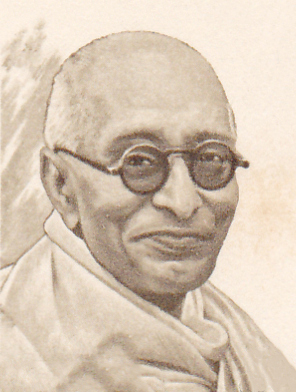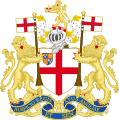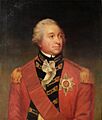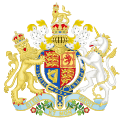List of governors-general of India facts for kids
The British rule in India saw many important leaders. Among them were the Governors-General and later, the Viceroys. These officials were the most powerful people in British India, acting as the main representatives of the British government.
The story of these leaders began in 1773. The Regulating Act of 1773 created the job of Governor-General of Bengal. This person was chosen by the East India Company, a powerful British trading company. A special group called the Council of Four helped the Governor-General, and their decisions had to be followed from 1773 to 1784.
Later, in 1833, the Government of India Act 1833 changed the title to Governor-General of India. Lord William Bentinck was the first to hold this new title.
After the Indian Rebellion of 1857, the British Crown took direct control of India, ending the East India Company's rule. In 1858, the Government of India Act 1858 created a new role: the Secretary of State for India. This person was based in London and oversaw Indian affairs, advised by a new Council of India. The old Council of Four was renamed the Executive Council of India.
The Governor-General then also became known as the Viceroy. This title, though commonly used, was more for ceremonies and showed that the person was the King or Queen's representative in India. The Governor-General still remained the main leader, appointed by the British Crown. This role continued in the new countries of India and Pakistan after they gained independence, until they became republics in 1950 and 1956.
Contents
Early Governors-General of Bengal (1773–1833)
These leaders were appointed by the East India Company. They were in charge of the Bengal region, which was a very important part of British India.
Warren Hastings (1773–1785)
Warren Hastings was the first Governor-General of Bengal. He faced many challenges and made significant changes.
- The Regulating Act of 1773 officially gave him this role.
- He established the Supreme Court of Judicature at Fort William in 1774.
- He founded the Calcutta Madrasa in 1780, which was an important educational institution.
- During his time, the first Indian newspaper, Bengal Gazette, was published in 1780.
- He also helped create the Asiatic Society of Bengal in 1784, which studied Asian history and culture.
Lord Cornwallis (1786–1793)
Lord Cornwallis is remembered for his important reforms in administration and land.
- He set up new courts to improve justice.
- He introduced the Permanent Settlement in Bengal and Bihar in 1793. This was a new system for collecting land taxes.
- He also started the Civil Services in India, which were government jobs that people could apply for.
Richard Wellesley (1798–1805)
Richard Wellesley was known for expanding British control in India.
- He introduced the Subsidiary Alliance system in 1798. This was a way for the British to control Indian states without directly taking them over. Indian rulers who joined this alliance had to let British troops stay in their territory and pay for them.
- He founded the Fort William College in Calcutta in 1800, which was for training British officials.
Lord William Bentinck (1828–1835)
Lord William Bentinck became the first Governor-General of India in 1833. He brought about many social reforms.
- He famously banned Sati in 1829, a practice where a widow would burn herself on her husband's funeral pyre.
- He worked to stop the practice of Thuggee, which involved gangs of robbers.
- He introduced English as the main language for education in 1835.
- He also made administrative changes, like abolishing provincial courts.
Governors-General and Viceroys of India (1858–1947)
After the 1857 rebellion, the British Crown took direct control. The Governor-General also became known as the Viceroy, directly representing the British monarch.
Lord Canning (1856–1862)
Lord Canning was the last Governor-General appointed by the East India Company and the first Viceroy under the British Crown.
- The Indian Rebellion of 1857 happened during his time.
- After the rebellion, Queen Victoria's Proclamation in 1858 officially transferred power from the Company to the British Crown.
- He introduced the Indian Penal Code in 1860, which is a set of laws for criminal offenses.
- He also set up the University of Calcutta, University of Bombay, and University of Madras in 1857, which were important steps for higher education in India.
Lord Lytton (1876–1880)
Lord Lytton's time was marked by a severe famine and controversial laws.
- A terrible famine, the Great Famine of 1876–78, affected India during his rule.
- He passed the Vernacular Press Act in 1878, which restricted Indian-language newspapers.
- He also introduced the Arms Act in 1878, making it harder for Indians to own weapons.
Lord Ripon (1880–1884)
Lord Ripon was known for his more liberal and progressive policies.
- He repealed the Vernacular Press Act in 1882, allowing more freedom for Indian newspapers.
- He introduced the idea of local self-government in 1882, giving Indians more say in local administration.
- He passed the Ilbert Bill in 1883, which aimed to allow Indian judges to try Europeans. This caused a lot of controversy among the British in India.
Lord Curzon (1899–1905)
Lord Curzon was a very active Viceroy, known for his administrative reforms but also for a controversial decision.
- He created the North-West Frontier Province in 1901.
- He passed the Ancient Monuments Preservation Act 1904 to protect historical sites.
- His most controversial act was the Partition of Bengal in 1905, which divided the large Bengal province into two parts. This led to widespread protests and the Swadeshi Movement.
Lord Minto (1905–1910)
Lord Minto worked with the British government to introduce reforms.
- The Muslim League was founded in 1906 during his tenure.
- He, along with John Morley (the Secretary of State for India), introduced the Morley–Minto reforms in 1909. These reforms aimed to increase Indian representation in legislative councils.
Lord Hardinge (1910–1916)
Lord Hardinge oversaw major changes, including the shift of India's capital.
- The capital of British India was moved from Calcutta to Delhi in 1911.
- The Partition of Bengal was annulled (reversed) in 1911.
- World War I began in 1914, and India played a significant role in supporting the British war effort.
- Mahatma Gandhi returned to India from South Africa in 1915.
Lord Chelmsford (1916–1921)
Lord Chelmsford's time was marked by growing Indian nationalism and tragic events.
- The Indian Home Rule movement started in 1916, demanding more self-government for India.
- The Montagu–Chelmsford Reforms and the Government of India Act 1919 were introduced, promising more Indian participation in government.
- However, the Rowlatt Act of 1919, which allowed for arrest without trial, led to widespread protests.
- The tragic Jallianwala Bagh massacre occurred in 1919, where British troops fired on peaceful protestors.
- The Non-cooperation movement led by Mahatma Gandhi began in 1920.
Lord Irwin (1926–1931)
Lord Irwin's period saw important discussions about India's future.
- The Simon Commission visited India in 1928 to suggest constitutional reforms.
- The Purna Swaraj declaration (complete independence) was made by the Indian National Congress in 1929.
- The Civil disobedience movement, including the famous Salt March, began in 1930.
- He signed the Gandhi–Irwin Pact in 1931, a political agreement between Mahatma Gandhi and the British government.
Lord Willingdon (1931–1936)
Lord Willingdon continued to deal with the independence movement.
- The Round Table Conferences were held in London to discuss India's future constitution.
- The Poona Pact was signed in 1932 between Mahatma Gandhi and B. R. Ambedkar, addressing the rights of lower castes.
- The Reserve Bank of India was established in 1935.
- The important Government of India Act 1935 was passed, which introduced provincial autonomy and laid the groundwork for a federal structure.
Lord Linlithgow (1936–1943)
Lord Linlithgow was Viceroy during the start of World War II.
- India was brought into World War II in 1939 without consulting Indian leaders.
- The Quit India Movement was launched by Mahatma Gandhi in 1942, demanding immediate British withdrawal from India.
- The Indian National Army was formed in 1942, aiming to fight for India's independence with foreign support.
Lord Wavell (1943–1947)
Lord Wavell oversaw the final years of British rule.
- He held the Simla Conference in 1945 to discuss India's political future.
- The Cabinet Mission came to India in 1946 to plan for the transfer of power.
- An Interim Government was formed in 1946, with Indian leaders taking charge of some administrative roles.
Lord Mountbatten (1947)
Lord Mountbatten was the last Viceroy of British India. His main task was to oversee India's independence.
- The Indian Independence Act 1947 was passed on July 18, 1947, leading to the creation of independent India and Pakistan.
- He was responsible for the Radcliffe Commission, which drew the borders between India and Pakistan.
Governors-General of Independent India (1947–1950)
After India gained independence in 1947, the role of Governor-General continued for a short time until India became a republic.
Lord Mountbatten (1947–1948)
Lord Mountbatten became the first Governor-General of the newly independent Union of India. He helped in the transition period.
C. Rajagopalachari (1948–1950)
Chakravarti Rajagopalachari was the first and only Indian-born Governor-General of India. He held the office until India adopted its own republican constitution in 1950, and the office was then abolished.
Images for kids
See also
- List of governors of Bengal Presidency
- Council of India
- Secretary of State for India
- List of presidents of India
- Governor-general


